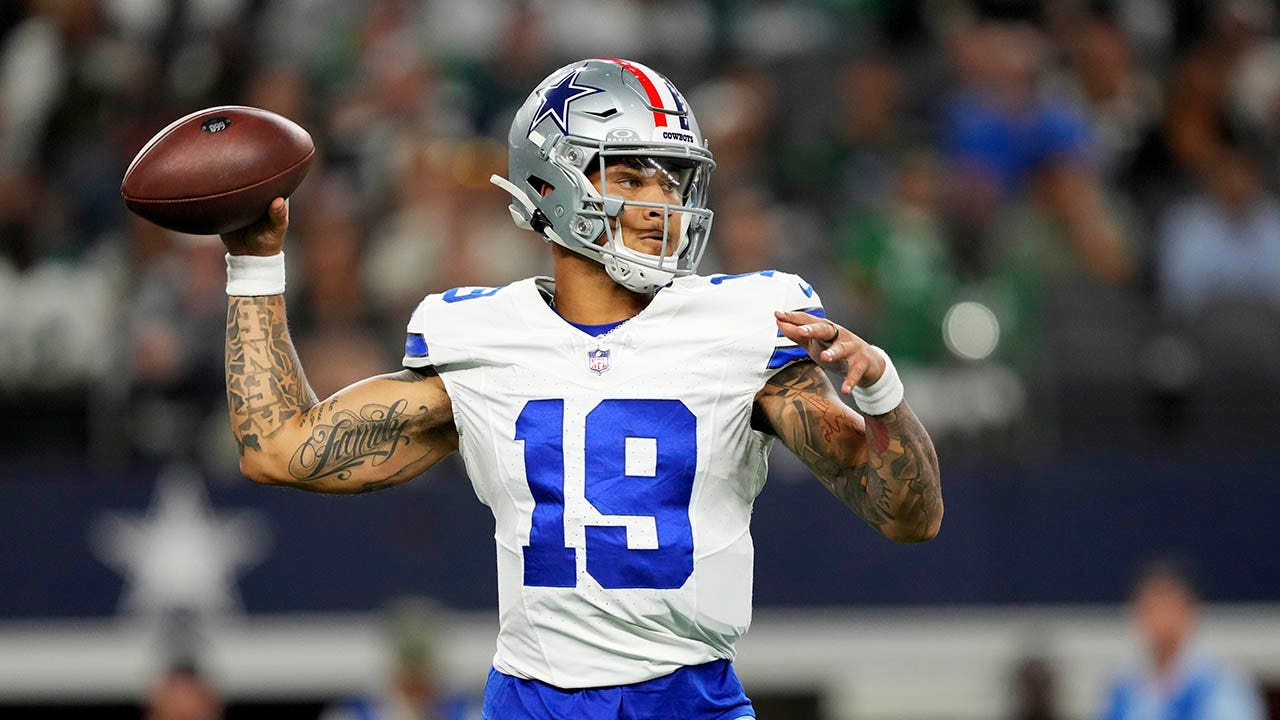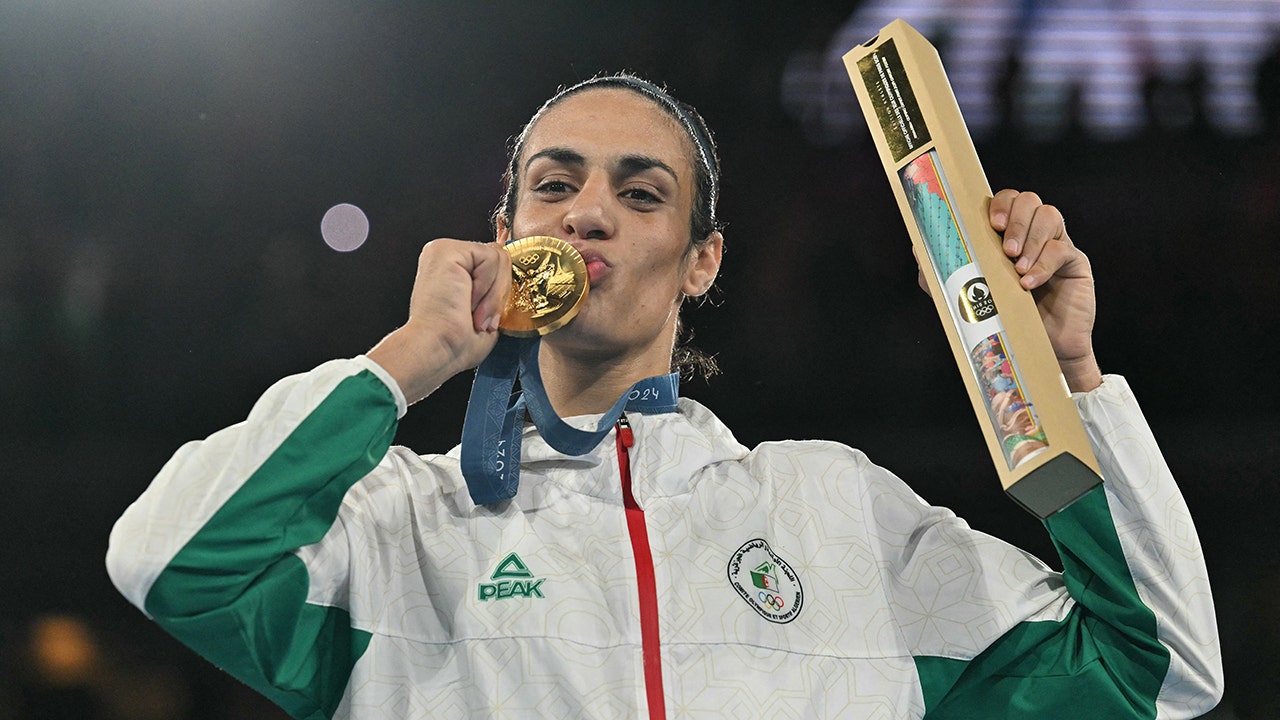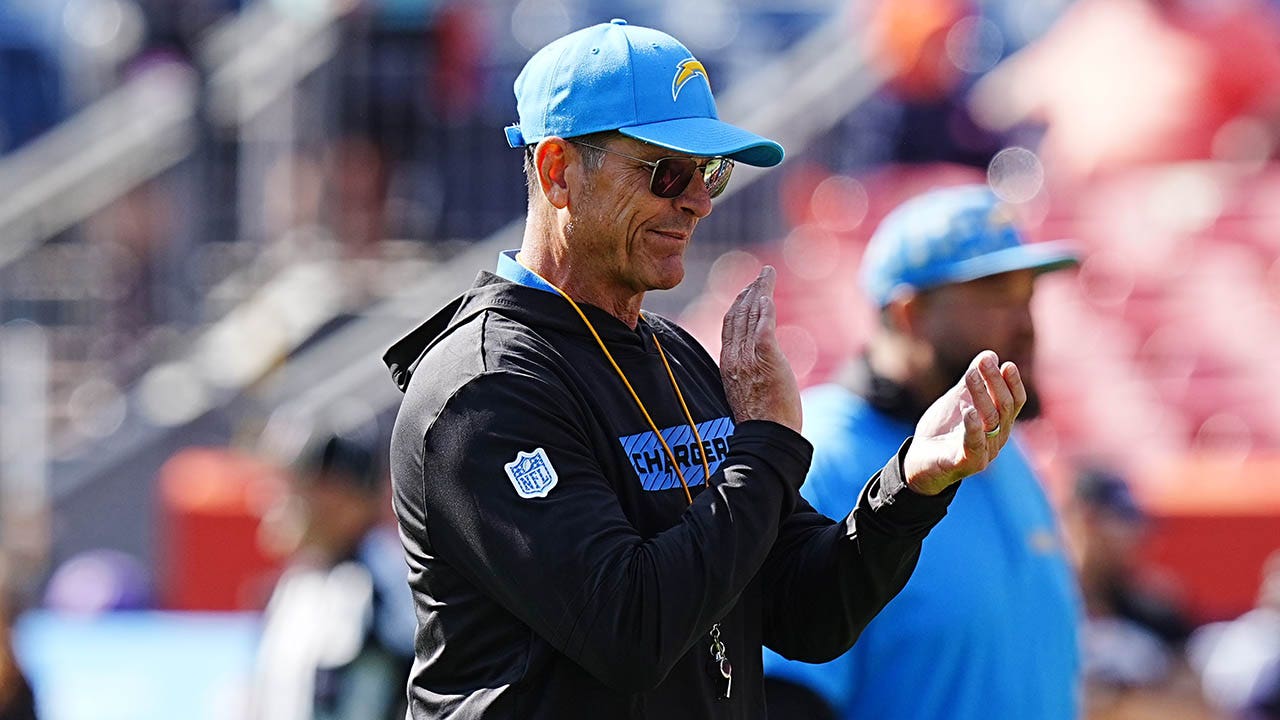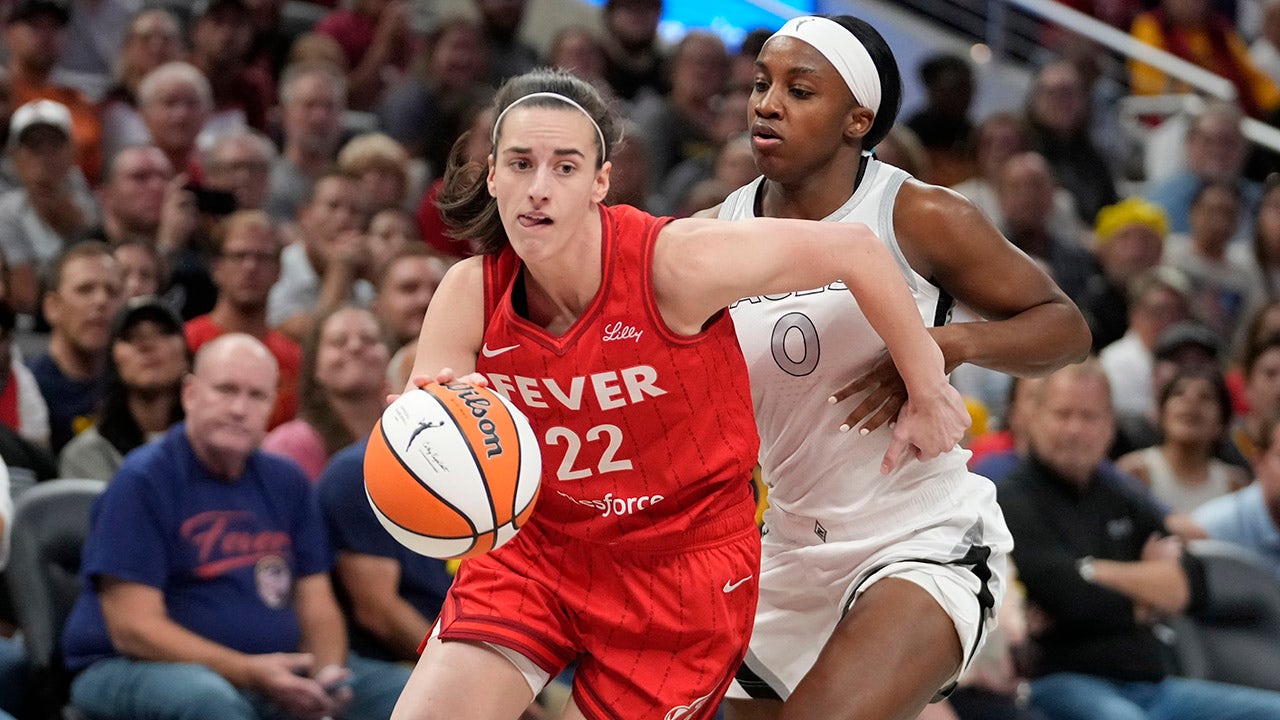Follow live coverage of the USWNT at the 2024 Paris Olympics today
For the first time in a long time, it feels like the U.S. women’s national team truly has a fresh slate.
With longtime veterans Alex Morgan, Megan Rapinoe, and Becky Sauerbrunn not on the 2024 roster, and younger stars Jaedyn Shaw and Trinity Rodman preparing to make their Olympic debuts, there is a sense that this tournament is truly a new group of players.
“(We’re) respecting our history, but then also trying to write a new story for this team,” defender Naomi Girma said before the team’s Olympic send-off matches. “Going into this tournament… that’s something that we’re really working on and we’re being intentional about: ‘What are we going to bring with us, and what do we need to change moving forward?’ I think it’s important for any team and program do that to continue being successful.”
However, there’s plenty of continuity from the old guard. Crystal Dunn, Lindsey Horan, and Alyssa Naeher are only a few of the players who bring a thread of history and stability with them, reaching as far back as 2015, when Naeher was a backup goalkeeper at the World Cup. However, only seven of the players on the 2019 World Cup-winning roster are now at this Olympics in France. Without Morgan on the call sheet, there isn’t a remaining Olympic gold medalist.
It’s a good core group of experienced players to have while also leaving a lot of room for relatively younger players — something that was by design according to head coach Emma Hayes, who only joined the group officially in late May.
“Looking through the cap accumulation of the team, there’s been a lack of development, of putting some of the less experienced players in positions where they can develop that experience,” Hayes said after unveiling her tournament roster. “I think it’s important that we have to do that to take the next step. So I’m not looking backwards.”
With a new vibe comes a new search for identity. This 2024 team cannot help but be aware of the fact that the United States, so used to a certain level of global dominance, has not won a major tournament since that heady 2019 run. There have only been two major tournaments since then, but the United States got eliminated by underdog rival Canada in the Tokyo Olympics, scrapping their way to a bronze medal against Australia three years ago. And in the 2023 World Cup, they eked out a round-of 16-appearance, only to crash out against Sweden on penalties.
“We’ve moved on from last summer,” Sophia Smith said from a media call in Marseille before facing Zambia in their opening match of Group B. “It’s a completely new environment and opportunity, a lot of new players. We just look forward. At this point, we take one game at a time, and with Emma coming in, we’ve learned a lot, we’ve grown a lot, and we’ve introduced a lot of new things that I think will help us have success in this tournament.”
This team is determined not to let the spectre of 2023 hang over them. It’s part of the paradox of any team history: you are inevitably shaped by past successes and failures, but you can’t be beholden to them. You have to learn from mistakes without dwelling on them.
This new team — which includes eight out of 22 players who weren’t even born when the 99ers vaulted the U.S. women to legacy status — hasn’t yet settled into a definitive vibe, at least not publicly. It’s understandable that, as a group, they would still feel emotionally up in the air given they haven’t even had a firm hand at the helm until Hayes arrived in late May, and before that spent nine months with an interim head coach.
“The transition wasn’t, in many ways, the easiest,” said Dunn. “But I think the team has done such an incredible job of just not skipping a beat.
“Obviously, we stepped out of the World Cup not feeling too amazing about our performance but I think, at the end of the day, we knew that we have an incredible opportunity to regroup and get back to it.”

Dunn is one of the more veteran players ushering in the new era. (Photo by Howard Smith, Getty Images for USSF)
That doesn’t mean they lack leadership. Besides captain Horan, many players have cited Dunn, Girma, Tierna Davidson, Rose Lavelle, and Emily Sonnett as stepping up to provide guidance and support. And there are actually only four players on the core Olympic roster with no previous Olympic or senior World Cup experience: Korbin Albert, Sam Coffey, Jenna Nighswonger, and Shaw. Of the alternates, Hal Hershfelt, Croix Bethune, and Emily Sams are also new, but are expected to see less field time, while goalkeeper alternate Jane Campbell was in Tokyo, also as an alternate.
There is a sense that, of the newer players in the mix, this could be the tournament that begins to define the next core group of players; the start of the next era of USWNT superstars.
Though Girma is only 24, she is already highly regarded as a next-in-line candidate for the captain’s armband amidst her stellar center-back play. Davidson, who might finally cement herself as Girma’s defensive partner if she can stay healthy, is only 25, while full-back Nighswonger is 23.
In attack, the U.S. has some of the most exciting names in global football, such as Rodman (22), Smith (23), and Mallory Swanson (26). Add in Shaw, at 19, and even Bethune at 23, and U.S. fans should be breaking down doors to watch these players compete together at the 2027 World Cup. And if 24-year-old midfield phenom Catarina Macario can get and stay healthy, the sky’s the limit under the right coach.
Compatibly blending older and newer players is never a given, but this current group seems to have done it through a mix of player- and staff-led communication. The word “fun” was on everyone’s lips when asked about what emotions were in the air and what social dynamics were starting to take hold with a different set of players. Sonnett, who has been in and out of the USWNT mix since 2015, called the team “kind of a silly group,” describing a dynamic with more room for play, like a round of Heads Up Seven Up because everyone was five minutes early to a team meeting.
“The team vibes have been really great,” said Dunn. “At the end of the day, we’re here to win soccer games, but we need to have fun doing it and that means creating that competitive environment that’s going to bring out the best of us and not just make us so uptight about making mistakes.”
The public pressure on the team to win in 2019 precluded a lot of that grace for mistakes. They were on a streak of high-profile World Cup successes, from challenging an ascendant Japan in the 2011 final to winning it all in what almost felt like a charmed run in 2015 in Canada. The pressure created a bubble of incredible focus, a sense of collective. Not that they were all buddy-buddy about it all the time, but everyone seemed to be on the same page about what they were doing and why.
No room for screwups, especially while the team was fighting for equal pay and better treatment from U.S. Soccer. And there’s nothing like sweating in the labor action trenches next to someone, staring down the possibility of a lockout, to solidify camaraderie.

The 2019 World Cup winners also bonded over their fight for equal pay. (Photo by James Devaney, GC Images)
The 2019 squad also benefited from loud leadership, mostly driven by the outspoken Rapinoe but certainly shared amongst Morgan, Sauerbrunn, and other players such as Ali Krieger, Kelley O’Hara, and even the contrarian Carli Lloyd. This was a squad that banged a drum wherever they went — whether they meant to or not.
This new iteration is still figuring out which drum they want to bang and when. With the pay equity lawsuit well resolved at this point, they get to move other priorities to the top of the list. Winning, of course, but also growth, innovation, adaptation, figuring out what the new pace of global development is like, and even how they might get ahead of that pace.
Dunn pointed out that the way the team cycles in newer players has accelerated, something that the packed soccer calendar and increasingly early player development demand with increasing necessity.
“The biggest difference is, you kind of had to wait to get that first cap,” said Dunn, who made her first USWNT appearance in 2013. “That was the norm. Some of us were in camps for a full year before we got more than two caps and that was kind of our process. And I think now, you’re finding that you almost throw these kids into the fire and see if they can survive, and I think that that’s one way to do it as well.”
Horan, whose leadership style involves one-on-one conversations, said the team will rely on their younger players, who were already rising to the occasion. “New players, young players, the confidence is outstanding,” she said. “I wish I had that when I was 18 coming into this team, so (I’m) proud of them.”
If the younger players have any nerves, they’re certainly not showing it. Part of it is probably getting plenty of club experience; Shaw, Rodman, and Bethune are all high-profile players who carry heavy tactical loads at their NWSL clubs. That’s good for Hayes, who has demonstrated a preference for fluid thinkers who can adapt positionally on the fly, able to press and defend out of several different formations over the course of a game.

Shaw and Rodman are also key pieces of their NWSL teams (Photo by Todd Kirkland, Getty Images)
But behind the tactics are the human connections on which trust rests. As Davidson put it in Colorado, “Having that feeling of someone having your back, I think, is so important in soccer, in a sport, especially when the game is getting tight. You turn to each other. You don’t turn to anybody else.”
Both the older and the younger players seem pleased that that trust is in place. “I think we’re doing such a good job at connecting off the field and just being together,” Rodman said. “It’s not so much isolation. Obviously, we all find that time to be by ourselves. But we’re having fun together. We’re having that human aspect of it as well, of hanging out and not talking about soccer, as hard as it is.”
“We are coming together more than I’ve experienced in my time on this team,” said Sam Coffey, who received her first cap in 2022. “We have a clear philosophy of what we’re trying to do, who we’re trying to be, who we want to be on and off the field. That culture is really being set and those points are being driven home a lot by Emma and her staff.”
When asked to define that philosophy, Coffey demurred on the tactical side of it, but off the field ultimately boiled it down to “Putting the team before yourself.”
“It’s doing whatever it takes for the team to win,” Coffey said. “It is putting the team, the winning culture, the success of the group, before anything involving the individual, and I’m proud to play for a team like that. I want to be on the team like that.”
The team-first ethos isn’t a new one, but its implementation can be as varied as there are ways to score a goal. From the way players describe it, there is a renewed vigor in camp, a sense of possibility and playfulness. The previous team was an autumn season, still vibrant and bountiful but waning towards the end of a cycle. This team is the renewed spring, waiting to see what comes from the seeds they’ve planted, hoping for a glorious summer.
(Top photo: Stephen Nadler/Getty Images; Design: Dan Goldfarb)






